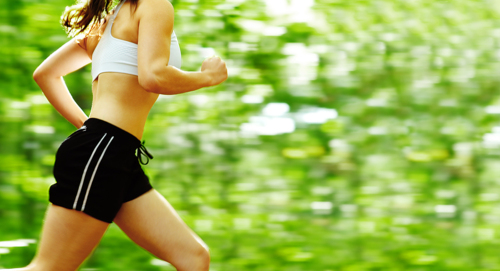
I used to suffer chronic back and knee problems. The doctors told me I wouldn’t be running any more.
I didn’t want to believe that. In fact, these problems were what first exposed me to acupuncture. Acupuncture not only helped me back into running, but it was part of my journey in becoming more aware of what made my pain and performance better or worse. Along they way, I have learned not to “pound” the pavement, so to speak (literally!). I got rid of my orthotics, and I have helped my body “relearn” how to run. I am running “forward” on the balls of my feet, transitioning from the classic arch supported, highly cushioned and heel-stabilized runners, into Vibram 5 finger shoes which are just a second skin on your feet. I have had amazing improvements. My chronic injuries are healing to a new level from my feet all the way up to my back. I notice a greater training resilience. I love running and want to being doing this all my life, and even with my grandchildren one day!
Dr. Lieberman’s research explains how modern cushioned runners may have allowed us to inappropriately extend our stride and create a dramatic heel strike phenomenon that can send damaging shock waves through our feet and up our legs. Ultimately this may cause many of the chronic injuries of modern day running (foot problems, shin splints, knee, hip, and back injuries).
Ironically, orthotics may make worse or perpetuate many chronic injuries they are intended to help! Dr. Lieberman’s findings are consistent with an obvious thought regarding our evolution! When we have an arch support or heel stabilization (as is the case with most runners), this prevents the normal system of shock absorption from developing in our tissues. We were designed to land gradually on the balls of our feet, with our leg muscles slowly taking up the slack through our achilles heel tendons. Also, our feet were designed to roll from the outside to the inside of the balls of our feet, to our big toe, as we launch off in a stride (called pronation). Both of these natural phenomena can be inhibited by modern day runners, causing both damaging heel-strike shocks, and over time, our feet to flaccidly form to our shoes. Our arches fall, or sinews slacken, our feet and body get repeatedly pounded.
It seems the very best long distance athletes in the world come from the poorest people in Africa; those who cannot afford shoes. The ones who can afford shoes there, seem to grow up as adults with less robust feet/running legs. This story is documented recently in CBC’s the Nature of Things, called “The Perfect Runner”.
Intuitively obvious isn’t it? If you support and stabilize tissues, then they will not develop the capacity to stabilize themselves! Consider a back support. If you went around with a back support on all the time, you would not have the core abliity to have proper posture to support yourself. Why would it be any different for our feet?
Try it out for yourself! So if you want to transition to running on the balls of your feet, or to barefoot running, start by just observing how you norrmally run with your runners. If you are heel striking, try running more forward for a bit on the balls of your feet. With any significant thickness of heel, it is more difficult to land on the balls of your feet. To run on the balls of your feet, you need to take shorter strides. Try barefoot running. You can’t run on your heels easily because it hurts. Your heel gets bruised so you are naturally forced to run forward on your balls.
Whether you get 5 finger vibram sole skins for you feet or just us your normal runners to run on the balls of your feet (you’ll need something to protect your skin since you don’t have adequate calluses), you will have to train to do this gradually over time. The problem is, at first, new injuries can develop to calf muscles and you achillies tendons, since these are weak and not used to taking up the forces of your landing. Start slowly, and only do 5-10 minutes in your run with ball foot running, and if it doesn’t hurt, eventually do more. Respect the pain and soreness during and after your run to tell you how gradually you will need to transition. No matter how your run or what sort of footwear you use, your body will be the best testing system to determine what works for you.
We were Born to Run (in bare feet, literally)! Check out Christopher McDougalls book titled with the same name “Born to Run” – I recommend you read it if you are a runner.
Good luck and good running!




